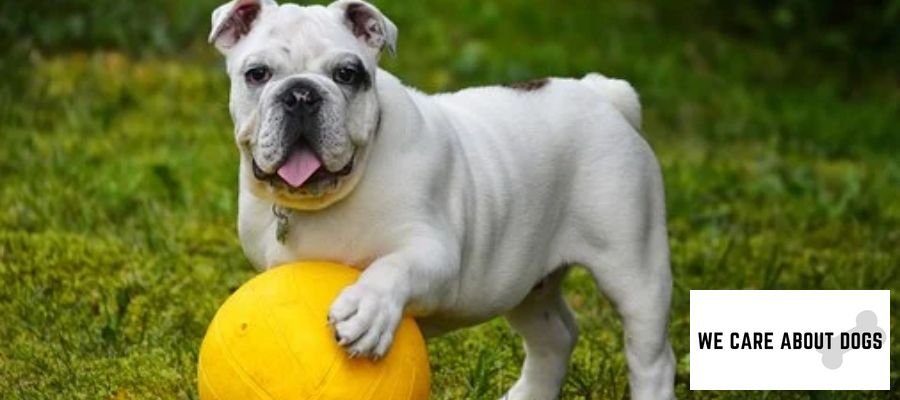How many toes does a dog’s foot have in total?
I took my three Chihuahuas to the groomer last week to get their nails cut. I also remind them of the dewclaws. One of my pet peeves is that some groomers have overlooked them in the past.
A dewclaw is comparable to a toe with a nail, except it is higher on the thigh. Dewclaws might be considered toes. It is possible to find out how many toes a dog has.
Most dogs have five toes on each front foot (four regular toes and one dewclaw) and four regular toes on each hind foot, for a total of 18 toes. Certain breeds, on the other hand, have additional toes (or declaws) on their rear legs, with double or single dewclaws. Furthermore, some breeders or vets completely remove a dog’s dewclaws. Dewclaws do not exist on my Jack Russell Terrier!
I’ll go through how many toes a dog has, what a dewclaw is and its history, breeds with additional toes, and more in this blog article.
What Is a Dog’s Total Number of Toes?
As stated in the beginning, the majority of dogs have 18 toes. On each foot, there are five toes. There are four regular toes and one dewclaw on each foot. A toe with a nail that is higher up on the thigh.
There are four regular toes on each rear foot. Different breeds have different numbers of toes.
What Is A Dewclaw?
A Beauceron puppy’s feet have dewclaws. A dewclaw, similar to a thumb, is attached to the inside of the dog’s legs. It is smaller than other nails and does not make direct contact with the earth. Some dogs have front dewclaws, while others have rear dewclaws.
Dogs are derived from wolves, and studies show that purebred wolves lack dewclaws. So, did humans encourage and develop dewclaws in their dogs to aid them in their work?
It’s really likely. The early dogs have front dewclaws, which enabled them to dig, climb, and turn rapidly.
These pups had a better chance of surviving and reproducing. They are currently present in almost all breeds.
Dr. Marty Becker, a TV vet and animal advocate, had this to say about these absurd figures:
“In order to get themselves out of water, dogs use their claws to grip and manipulate things such as bones, toys, and ice.” They also use their claws to gently massage an inflamed eye.
To keep themselves balanced, agility dogs may use their dewclaws to hold the edges of the teeter. Fast canines, such as whippets and border collies, utilize dewclaws to turn like race cars.
Who’d have guessed? Why aren’t these additional toes present in all dogs?
Dewclaws can become caught on objects and torn if they protrude too far. Ouch! As a result, veterinarians will occasionally remove them in order to avert a potentially tragic situation.
If extra toes are not part of the breed standard, breeders usually remove them shortly after birth for smoother skin.
The Surprising Rear Dewclaws
Many working breeds of dogs have grown back paws with dewclaws. Some breeds of dogs have two sets of dewclaws. Some dogs have a second pair of toes. So, what are these breeds?
They are mostly large or enormous breeds that defend farmers’ cattle in Europe’s mountains. We don’t know for sure, but the additional toes almost certainly helped them perform better.
The Lundehund (Norwegian)
This breed, for example, is known for having six toes on each foot. The additional joints in the dog’s toes help them to grip the rocky rocks they needed to ascend to hunt puffins. Evolution at its finest!
Pyrenees (Great Pyrenees)
I actually had one of these gentle giants in a class I was teaching when I was a dog trainer.
I was taken aback when I noticed this adorable dog with twin dewclaws on his rear legs. Because they were so lengthy, I was worried they’d get trapped in something.
His parents did not force him to work, but they did maintain the extra dewclaws because they were a big part of who he was. Because they are bone-to-bone with the leg, it is also a painful surgery.
You may be wondering why Great Pyrenees have extra toes. What other breeds share these characteristics?
The muscular mountain dogs used their unusual toes to help them gain the traction they needed as a canine guard who needed to move quickly if they had something to chase. They were used for a special reason.
Owners of this breed claim that their dogs have been known to dig their extra toes in the soil when chasing them.
What Kinds of Dogs Have Rear Dewclaws?
The Pyrenees and the Norwegian Lundehund
The Pyrenees and the Norwegian Lundehund are two mountain ranges in the Pyrenees region of Spain. The AKC also includes the following canines:
Anatolian Sheep Dog
This enormous Turkish breed nearly always has two hind leg claws.
Beauceron
It’s a large French dog with close-to-the-ground rear dewclaws that allow it to walk easily on snow and ice. The breed standard requires two hind legs on both sides.
Briard’s
It is a French breed that has two dewclaws on each leg. Double rear legs are required by the breed standard.
Estrela Mountain Dog
This massive dog from Portugal’s Estrela Mountains was raised to defend herds and homes, and it can have single or double dewclaws.
Icelandic Sheepdog
The Icelandic Sheepdog is Iceland’s sole native breed. The breed was created to protect and herd cattle. In contrast, the breed standard is double.
Portuguese Sheepdog
This active and intelligent dog is dedicated to livestock guarding and herding, according to the AKC. It has either one or two sets of dewclaws.
Saint Bernard
This peaceful giant was reared to help those who had fallen lost in the icy Alps. Although it can have single or double dewclaws, they are not required by the breed standard.
Last but not least, how many toes does a dog have?
Most dogs have 18 toes, with 5 on each front foot (1 dewclaw) and 4 on each foot. The answer to this question varies since some dogs have more toes than others.
The dogs with extra toes all have one thing in common: they are all large, flock-guarding, working canines from Europe’s highlands.
Only a few working breeds had double dewclaws, which disappeared when the domestic dog emerged. Dewclaws are also removed by certain breeders and doctors. Dewclaws may exist on your dog. Check to check whether they’ve been cut by your groomer.

